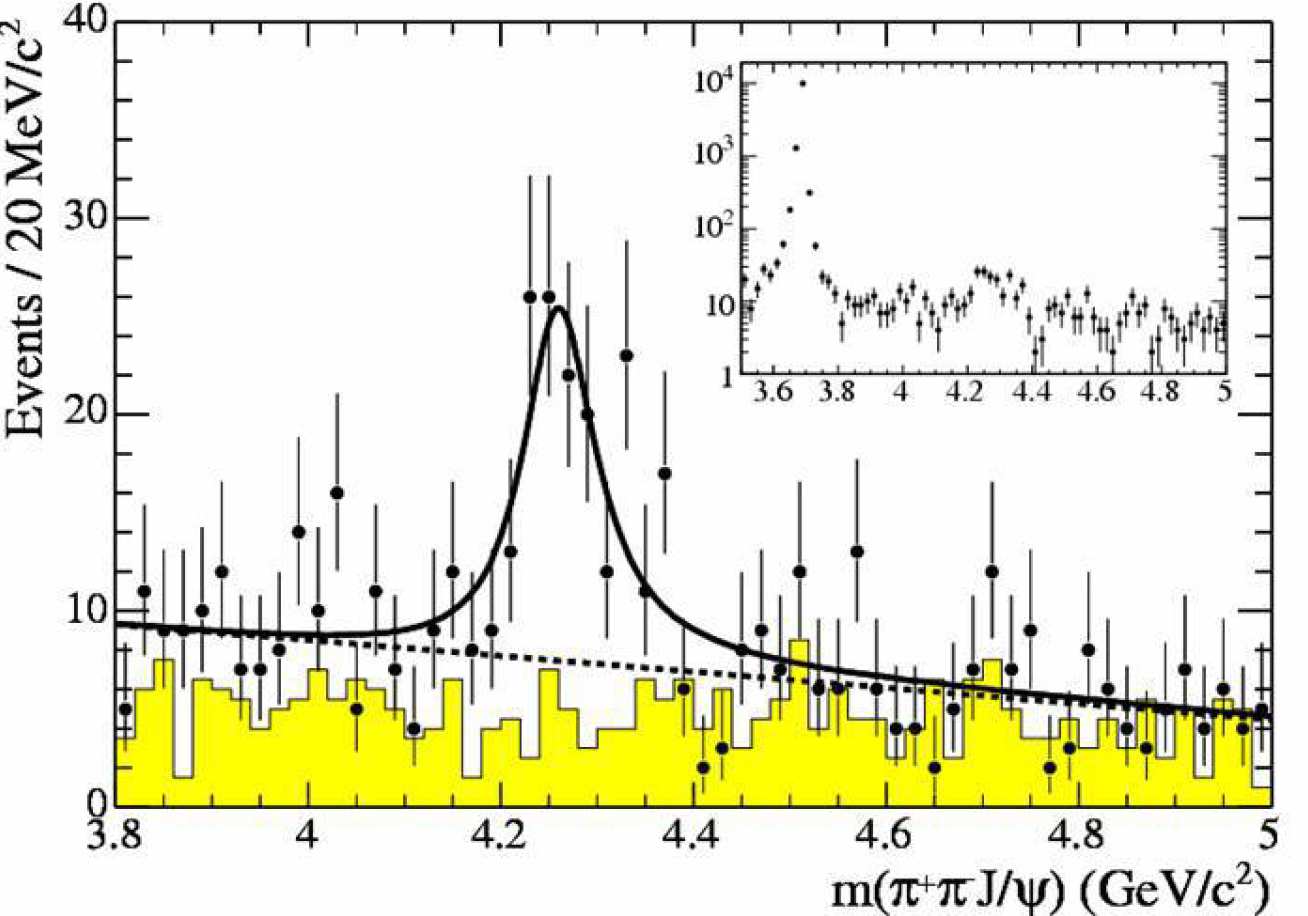BaBar
The BaBar Experiment at SLAC
P Dauncey, M J Tibbetts
The BaBar detector is located at the PEP-II electron-positron collider at the SLAC laboratory in California. The BaBar collaboration is studying CP violation using B mesons. CP violation allows a difference between particles and antiparticles and hence is thought to explain the matter-antimatter asymmetry of the Universe. In 2001 BaBar made the world’s first observation of this phenomenon in B decays through the measurement of the parameter sin2B of the CKM matrix.
The BaBar detector was completed and started data-taking in 1999. Since that time, it has recorded around 600 million B meson decays. The detector (shown above) consists of tracking, particle identification and calorimete subdetectors. In particular, the novel particle identification device is based on observation of Cherenkov radiation from charged particles passing through quartz bars. The Cherenkov light is detected in the large prominent ring (above) at the end of the detector.
The Imperial group is heavily involved in measurements of charmless decays. An example of a computer reconstruction of a charmless B decay observed in the BaBar detector is shown above. These decays are sensitive to different CKM parameters from “indirect” CP violation, and allow estimates of the CKM angle parameters sin2a and y. So far, only one charmless mode has shown significant “direct” CP violation so these parameters are not yet accurately determined. However, BaBar is scheduled to continue data-taking until 2008 and is expected to quadruple its data sample over that time. This will allow many more such modes to be accurately measured.
The measurement of CP violation in sin2B is done by looking for a difference between B and anti-B meson decays. These can only be different if matter and antimatter are not exactly “equal-but-opposite” and this is one of the consequences of CP violation. The figure below shows the rate of B decays to a particular final state (here J/Y KS) compared to anti-B decays as a function of their lifetime. This shows a very clear difference between the two and was the first measurement to demonstrate “indirect” CP violation in B meson decays.
BaBar has a wide physics programme other than CP violation, for example searches for new particles. The plot below shows the peak from a new particle, called the Y(4260), discovered by BaBar in 2005. The nature of this particle is not yet understood.



